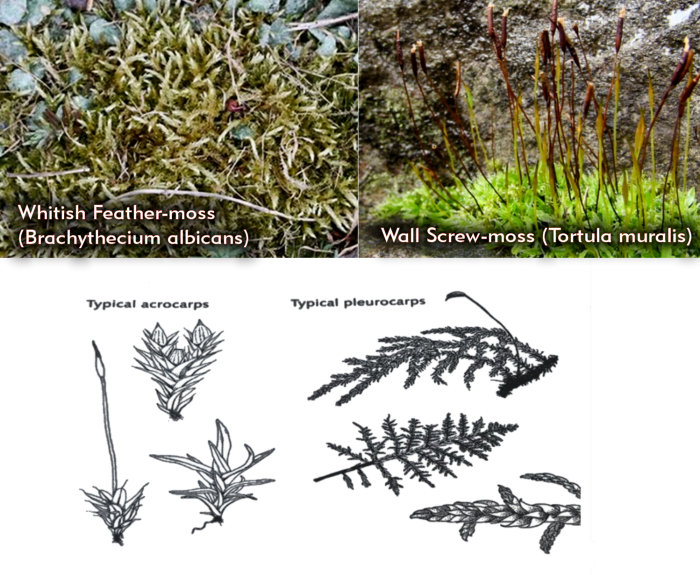Frizzled Pincushion….Whitish Feather-moss…..Waxy Earwort…..Dwarf Swan-neck Moss…..who can resist learning more about the world of mosses and liverworts with names like these?
There are approximately 1,069 bryophytes in Britain and Ireland: 767 mosses; 298 liverworts and 4 hornworts All are ‘cryptograms’ (seedless plants), which reproduce by spores and/ or by asexual gemmae or tubers.
We will just touch on mosses here and describe the differences between acrocarps and pleurocarps.
Acrocarpous mosses:
- Most form cushions and are upright
- Unbranched or sparingly branched
- Leaves rarely glossy
- Capsules at the tops of the stems
- Grow in disturbed habitats
Pleurocarpous mosses:
- Dense mats, spreading horizontally
- Pinnately branched
- Leaves often glossy
- Capsules arise from the sides of main stems
- Occur in less disturbed habitats

Mosses are easier to spot in the winter months as the vegetation dies back and their green colour stands out on bark and woodland floors. The British Bryological Society (BBS) are a good source of information to get started. Take a look at their resource Mosses and Liverworts of Towns and Gardens. The RDNHS library has the British Bryological Society’s book, ‘Mosses and Liverworts of Britain and Ireland. A Field Guide’ (2010), which includes a field key to identification and good photographic ID of each species.
If your interest in mosses has been piqued, come along to a meeting at Pangbourne village hall and take a book out of the RDNHS library.
Article by Katie Jenks
